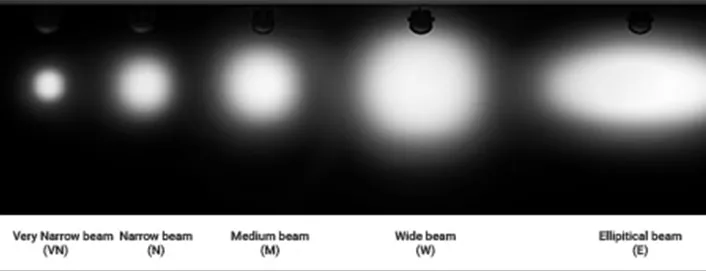Led Technology
BITASO uses high-power LEDs and Chip-on-Board LED (COB). This provides an advantage to the end user by obtaining the highest lumen output & most suitable light engine for the application. The high quality of LEDs supplied with BITASO luminaires in conjunction with the highest efficiency lens & optical systems will provide
the greatest distribution variety in the industry.
Lighting Distributions
BITASO provides a wide variety of optical light distributions suitable for all architectural, roadway and area lighting applications, for example, VN: very narrow, N: narrow beam, M: medium beam, W: wide beam, VW: very wide beam: E: elliptical beam, plus Type II, III, IV and ME classification from IESNA/EN.
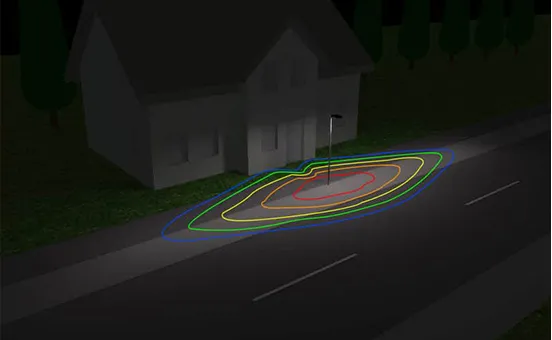
Distribution Type I (T1)
Type I distributes a very lineal shape. It is the optimal choice for applications such as one or two-lane roadways, walkways, paths or sidewalks. With a preferred lateral width of 15 degrees, it is suitable for lighting streets or pathways that have a width of up to 2 times the mounting height.
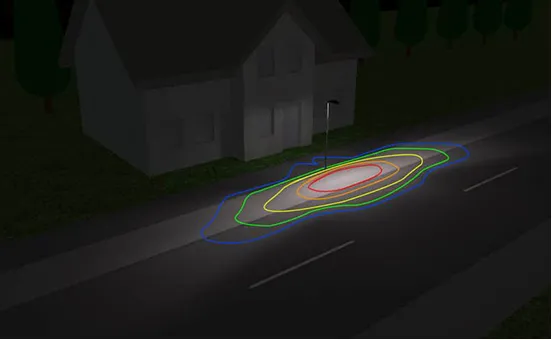
Distribution Type II (T2)
Ideal for wider walkways, entrance, roadways, bike paths and other long and narrow lighting application. Intended to be located near the side of a roadway, approximately 1.15 MH. Half-maximum candela trace on the Street side is beyond the 1 MH LRL but not beyond the 1.75 MH LRL.
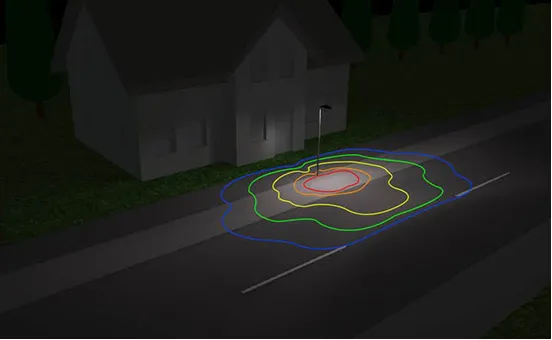
Distribution Type III (T3)
Ideal for roadways, general parking, and other lighting application. Half-maximum candela trace on the Street side is beyond the 1.75 MH LRL but not beyond the 2.75 MH LRL.
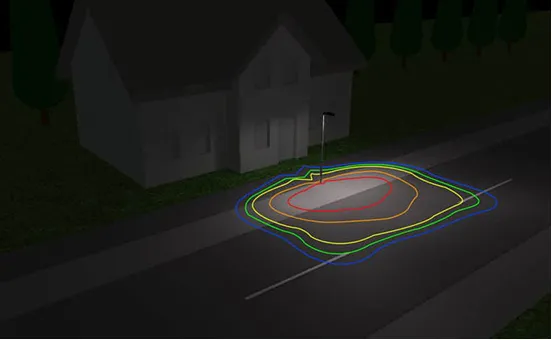
Distribution Type IV (T4)
Especially suited for wall mounting or area applications and for illuminating the perimeter of parking areas. Half- maximum candela trace on the Street side is beyond the 2.75 MH LRLMH LRL.
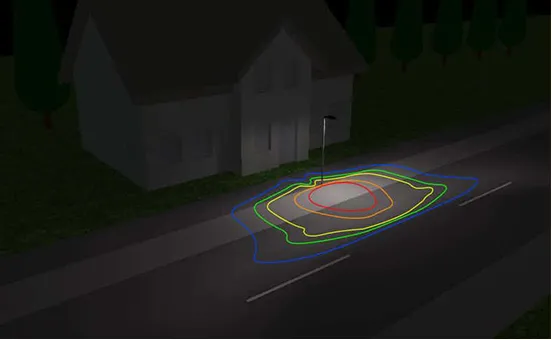
Distribution Type V (T5)
Type V distributes a circular pattern (there is also a Type VS that produces a square distribution with a more defined angle). Having the same distribution at all lateral angles, it is perfect for general area lighting – the ideal choice if you are looking to do parking lots or intersections.
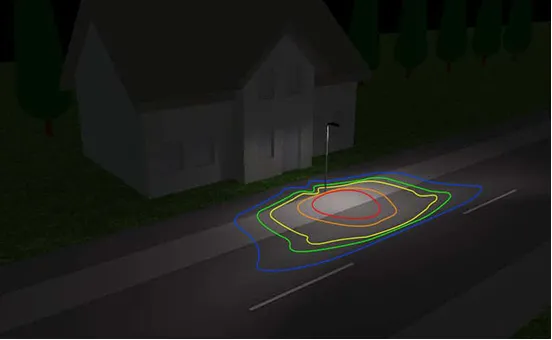
Distribution Type ME
For motorized vehicles on traffic routes. Some countries apply ME classes from ME1-ME6, with ME1 defining the strictest requirements. For wet road conditions the MEW classes go from MEW1 to MEW6.
MH= Mounting height
LRL= Longitudinal Roadway Lines, running along the roadway.
Very Narrow beam (VN) Narrow beam (N) Medium beam (M) Wide beam (W) Elliptical beam (E)
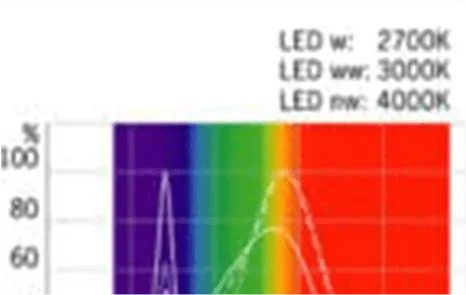
LED Spectrum
LEDs in BITASO luminaires provide options from neutral white (W40, 4000K) warm white (W30, 3000K) and extra warm (W27, 2700K). Some fixtures offer tuneable-white (2700K to 6500K) or RGBW (Red, Green, Blue, White) colour-changing sources. LEDs do not generate UV or IR radiation and have very low colour fading rate as compared to conventional lamps.
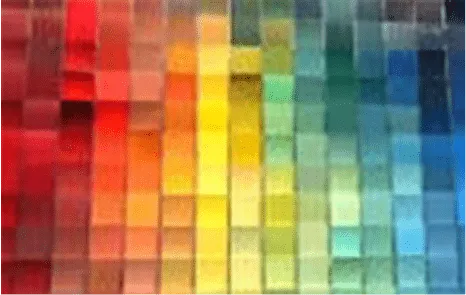
LED Colour Rendering
The colour rendering index (CRI or Ra) is a standard measure of how well a light source reproduces the colour of an object compared to a standard reference (tungsten) source. The index value is computed from how well the light source under test reproduces the colour of 8 standard pastel colour swatches. Generally, for LED fixtures, a colour rendering index of between 80 and 90 is stated as good and a value between 90 and 100 considered as excellent.
BITASO provide fixtures with a tested CRI value >80 for general indoor and outdoor as standard, however, CRI >90 is optional upon request.
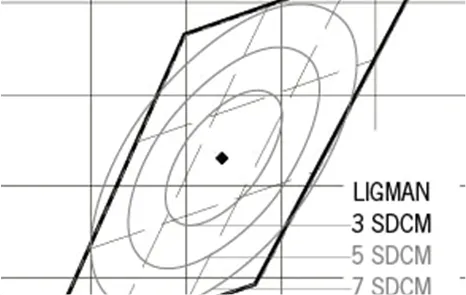
LED Colour Deviation
SDCM is an acronym which stands for Standard Deviation Colour Matching and it has the same meaning as a “MacAdam ellipse”. The SDCM value, defined from visual colour matching experiments, shows the standard deviation of the colour discrimination variations from a specific center on the xy chromaticity diagram based on ANSI engineer Davis Lewis MacAdam described. Increasing size of ellipse can classify the maximum colour deviation of light sources referred to as MacAdam ellips of a certain step size SDCM.
BITASO uses high-power LEDs and Chip-on-Board LED (COB) with 3 SDCM (or 3-Step MacAdam ellipses) as the standard suitable for most indoor and outdoor project applications.
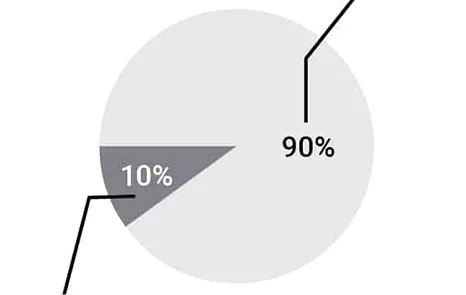
LED Lumen Maintenance
At BITASO we design our own LED light engines to maintain the thermal equilibrium of our luminaires below the critical temperature range and we properly input the optimum driving current and operating conditions to state maximum luminous flux output together with the stated useful life performance of the LED luminaires.
We publish the rated values of L90/B10, L80/B10 and L80/B50 for our entire range of LED products, which indicates the lifetime expectancy of the LEDs used. As an example, a rated lifetime of L90/B10 to 60,000 hours means that the LEDs maintained lumen performance is over 90% after 60,000 hours. It also indicates that only 10% of LEDs will not achieve 90% of their original luminous flux after 60,000 hours.
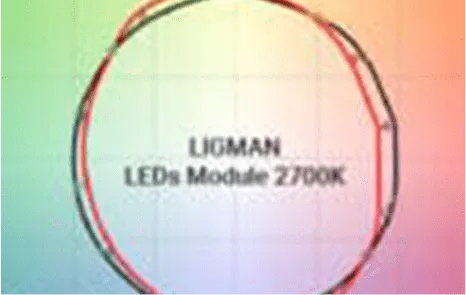
TM-30-15 (LATEST)
TM-30-15 is the latest method adopted by the Illuminating Engineering Society Of North America for quantifying colour rendering properties of light sources, these results distinguish both colour fidelity and colour gamut and provide a far more comprehensive framework for better interpreting chroma and hue shift associated with light sources as compared to the standard Ra rating method.
In keeping with the new measurement standards and meeting market requirements, BITASO now provides TM-30-15 as well as CIE Ra and CIE R9 reports for all fixtures.
Contact Us
E-mail: sales@bitaso-lite.com
Tel.: +86 758 2801 266
Phone: +86 186 2047 1396
Add.: No.308, Lianhai Rd., Jianghai District, Jiangmen City, GD.P.R. China
